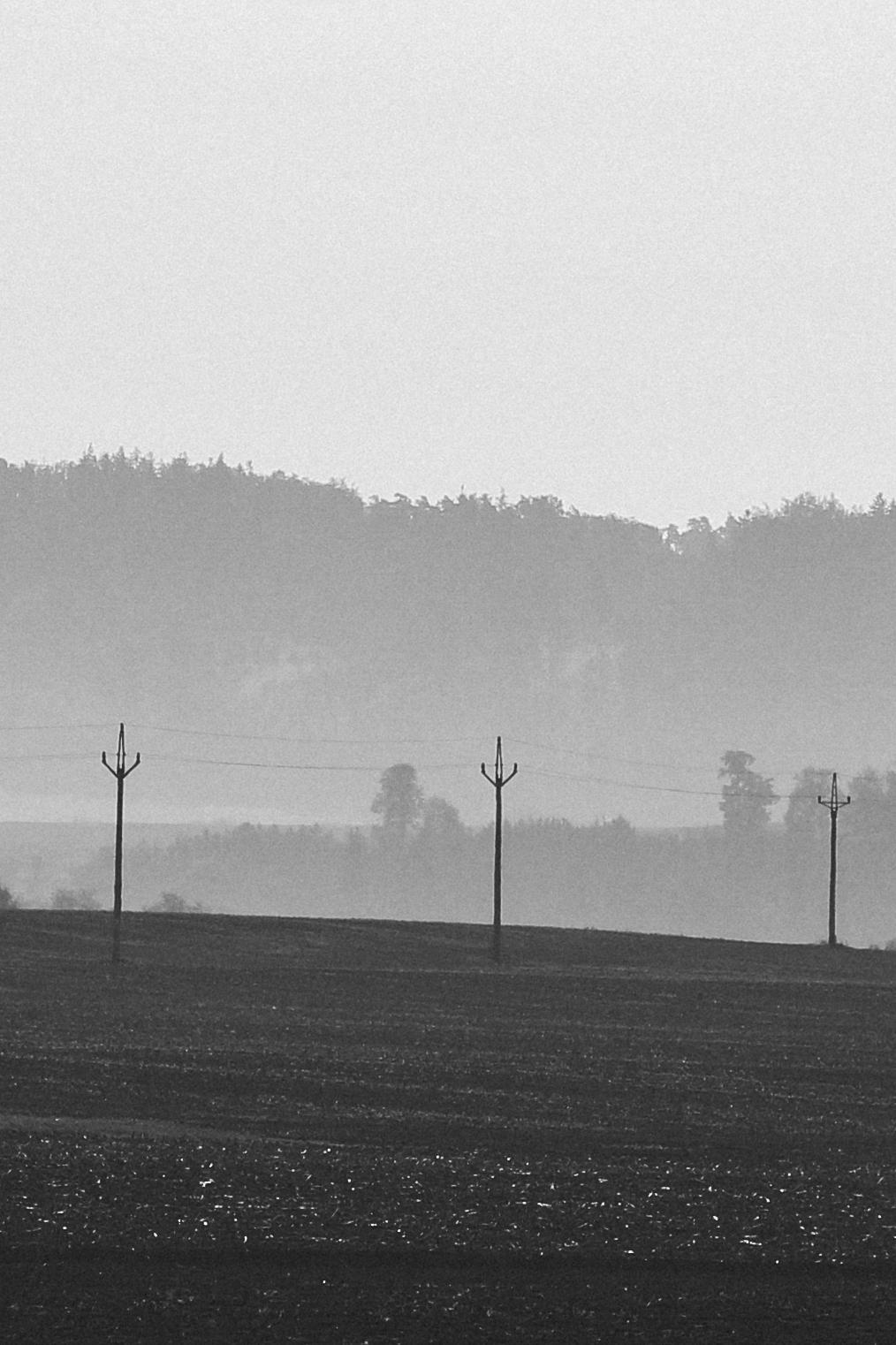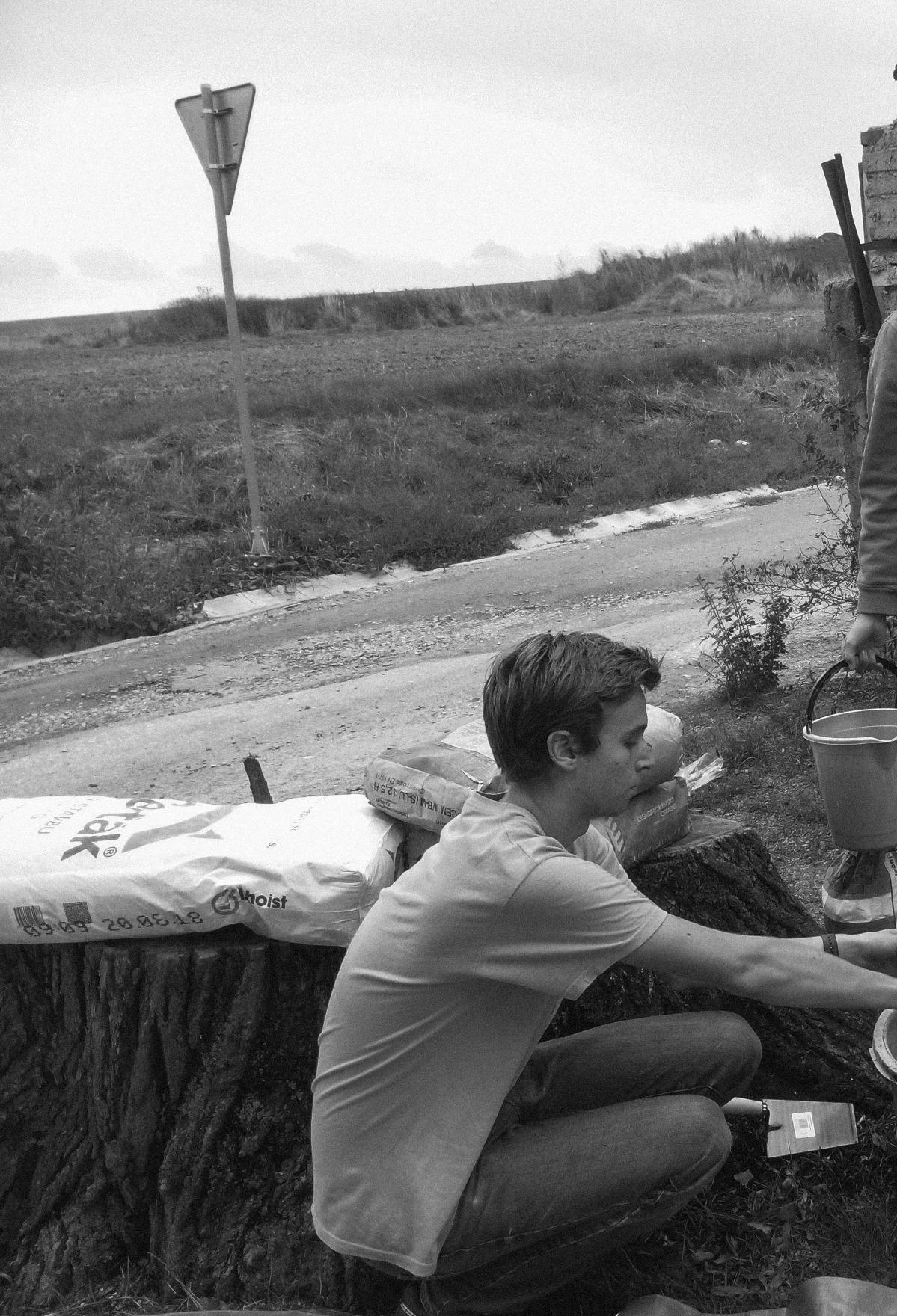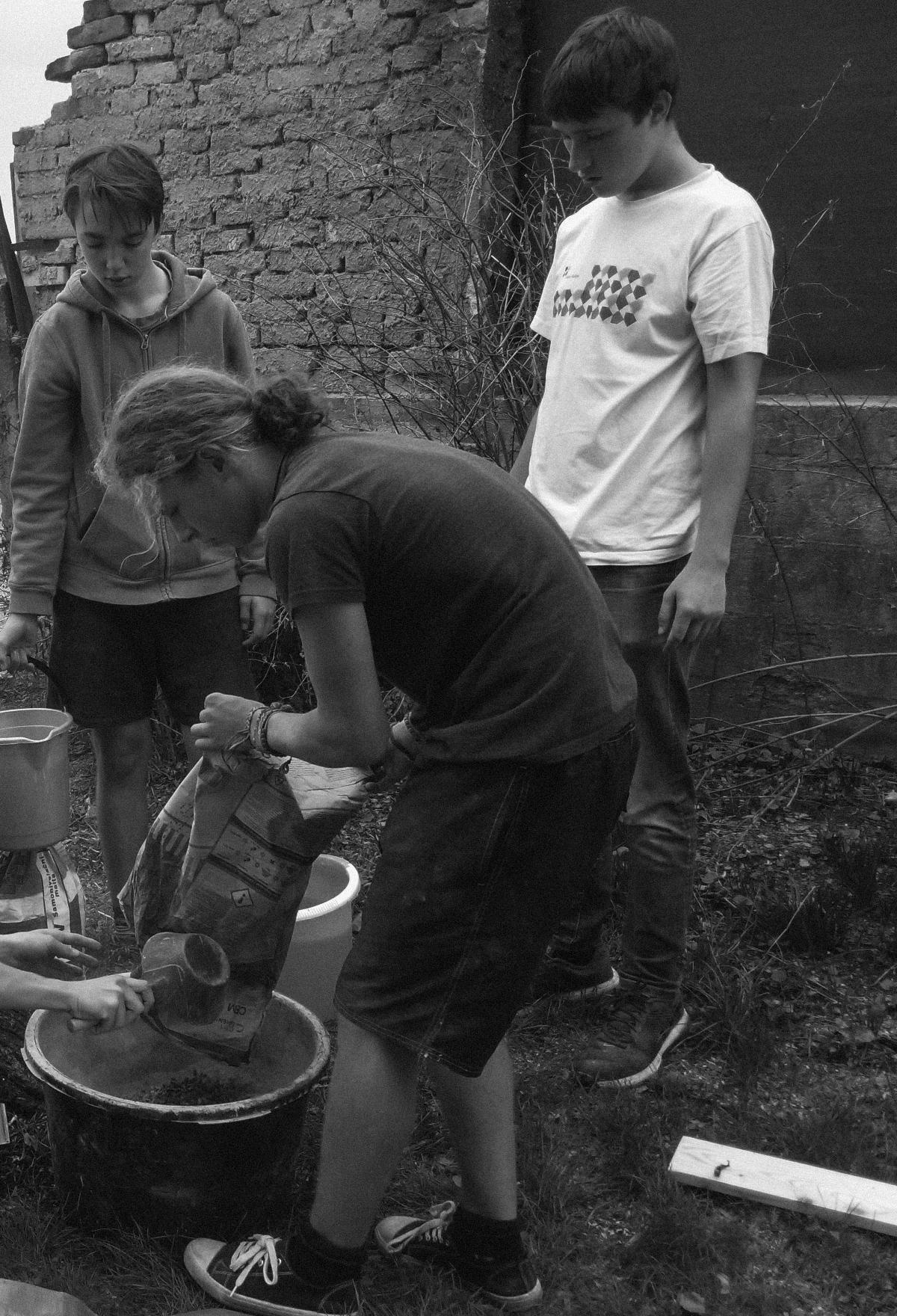
8 minute read
collective landscape krajina kolektivní
Collective landscape
44
Advertisement

3
46
One can find notable differences related to the landscape and its scale when comparing the present state of almost any location in the Czech Republic with the one captured during aerial surveying in the early 1960s. Moreover, comparing the Czech-Austrian borderlands during 1952 with the current state, one can conclude that these changes have occurred unilaterally on the Czech side. [6] The cause of all the changes was the collectivization of agriculture, a political construct of Marxism ideology which was further developed by Friedrich Engels. In Czechoslovakia, this experiment negatively affected thousands of people and lead to the abolition of centuries-old rural traditions. During a short period of time, the fields previously owned by individual families were merged together into collective areas of uniformly cultivated units. After 1945, a considerable left-wing enthusiasm emerged throughout the whole
collective landscape territory of Czechoslovakia. Following the approval of the Košice Government Program, the potential for political competition was suppressed: The government will entirely ban all fascist parties and organizations and will not allow any form of a political party to endanger the interests of the nation and the state. Those political entities shall not be re-established (agrarian parties, its derivates such as so-called “trading parties”, The National Unification, or those parties which joined together the People’s party during 1938). (Košice Government Program, 5. 4. 1945, title IX, paragraph 7) [7] It practically meant that the agrarian party had been banned. The party was, like other political subjects, “to blame for not following the interests of the nation and the state” [8]. As a result, agricultural labourers were suspected of taking actions against the state. The film Dařbuján a Pandrhola also illustrates the overall effort to devalue and
47
48
victimize the image of successful agricultural labourers. The poor miner Kuba is trying to make a living for his wife and eleven children. During the story, he receives a magical power to heal people and so he also helps a local dishonest brewer – wealthy villager Pandrhola who, after completing a successful healing procedure, takes advantage of the situation by deceiving the good old Dařbuján.[9] During the war, landowners and agricultural labourers did not limit their activities in any way. On the contrary, they became important food producers while some of them became rich due to the war conflict. According to this fact, social tension had risen between the general population and these agricultural entrepreneurs. After the expulsion of the Sudeten Germans, many agricultural buildings, farms and fields remained without their owners. It was an opportunity for the landless workers from all over Czechoslovakia to begin a new rural life, so they started to occupy
collective landscape abandoned agricultural buildings and cultivate the surrounding fields. However, The Communist Party of Czechoslovakia sought approbation, not only from the landless workers, but also from the agricultural labourers. 1.3 million people weres working in agriculture during 1948. [14] Therefore, those people represented a significant voting potential which could not be embraced without a false public declaration stating that there will be no collective agriculture introduced in Czechoslovakia. [7] Despite this statement, the communists were interested in introducing collective agriculture not only in Czechoslovakia, but also in the rest of their territory. The concept of unified agriculture is directly linked to the ideas of Karl Marx and Friedrich Engels, who started to apply the concept of expropriation of means of production such as agricultural machinery and lands. This removed private ownership where individuals competed between
49
50
themselves. This competition was then replaced by the unified association, in which the means of production were no longer in the hands of a limited group of individuals, but in the hands of the whole community – the state. [10] Afterwards, the Communist Party gained more political points by promoting land reform which, among other things, set the maximum area of land that could be managed by an individual to 50 ha. The ownership of land by eminent landowners was restricted and the Communists also received support from smaller agricultural labourers and landless workers as they had been granted the confiscated land. This strategy supported the class struggle and the social manipulation led to massive support for the Communists, who then overwhelmingly succeeded in the upcoming elections. However, after winning the elections and subsequently consolidating power amongst the state structures, the Com-
collective landscape munist Party returned to promoting the concept of unified agriculture and collective land ownership. As a result, unified agricultural associations (JZD) began emerging across the country, seizing land and even property from individual agricultural labourers and farmers who were under great pressure. That is how the means of production were expropriated and put in the hands of the whole community – the state. The landowners who chose not to obey this newly emerging concept were violently displaced, so that the strong ties between the farmers and their land and land of their ancestors were broken. As a result, an association where the direct producer became an employer was established. The land was suddenly in the ownership of everyone and no-one at the same time.[11] Scaling the lands from smaller individual fields to large areas owned by national agricultural associations directly affected minor sacral architectural objects in the
51
52
landscape. By their very nature, wayside shrines, calvaries and chapels were usually situated on the borders of fields and roads connecting individual lands. The merging of individual lands, together with industrialization contributed to the fact that the boundaries between each agricultural land and adjacent routes disappeared while ploughing lands together. This radical change in the context of minor sacral structures inevitably contributed to their physical and spiritual liquidation. The sacral architecture suddenly stood in the middle of the agricultural fields, preventing tractors from efficiently operating in the area. Moreover, communist ideology fully supported the removal of these religious symbols from the landscape. Only in the most religious areas, e.g. South Moravia, were the locals able to save those minor structures – mostly the statues, by simply moving them next to the nearest church.
collective landscape

53
54
Při porovnání současného stavu téměř jakéhokoli místa v České republice s jeho stavem zachyceným při snímkování na počátku 60. let 20. století spatříme značné rozdíly zejména v odlišném měřítku krajiny. Pokud porovnáme česko-rakouské pohraničí v roce 1952 a v současnosti, dojdeme k závěru, že tyto změny nastaly pouze na české straně.[6] Příčinou je kolektivizace zemědělství. Jedná se o politický konstrukt ideologie marxizmu, kterou dále rozvíjel Friedrich Engels. V Československu tento experiment zapříčinil neštěstí tisíců lidí a zrušení staleté selské tradice. Pole, která vlastnily jednotlivé rodiny, se tak do současnosti slila společně s mezemi do kolektivních ploch jednotně obdělávaných celků. Po roce 1945 na celém území Československa propuklo značné levicové nadšení. Po schválení Košického vládního programu došlo k omezení politické soutěže: Odhodlána vykořenit fašismus politicky a morálně do všech důsledků, vyhlásí vlá-
krajina kolektivní da zákaz všech fašistických stran a organizací a nedovolí obnovení v jakékoli formě těch politických stran, které se tak těžce provinily na zájmech národa a republiky (agrární strany, její odnože tzv. živnostenské strany, Národního sjednocení, jakož i těch stran, které v r. 1938 splynuly s ludovou stranou). (Košický vládní program ze dne 5. 4. 1945, hlava IX, odstavec 7) [7] Prakticky to znamenalo zákaz agrární strany. Ta se, stejně jako další politické subjekty, měla „těžce provinit na zájmech národa a republiky“.[8] Kvůli tomu na zemědělcích ulpělo podezření ze snahy o protistátní činnost. Celkovou snahu o pošpinění obrazu úspěšnějších rolníků dokládá i film Dařbuján a Pandrhola. Zde se chudý havíř Kuba snaží najít obživu pro svou ženu a jedenáct dětí. Následně dostane kouzelnou moc uzdravovat a pomůže i lakomému sládkovi – vesnickému boháči – Pandrholovi. Ten po svém uzdravení situace zneužije a dobráka Dařbujána oklame.[9]
55
56


57
58
V období války statkáři a rolníci svou činnost nijak neomezili. Naopak se z nich stali důležití producenti potravin a někteří díky válečnému konfliktu zbohatli. Mezi běžným obyvatelstvem a zemědělskými podnikateli proto vznikalo sociální napětí. Po odsunu sudetských Němců zůstala stavení a polnosti bez svých majitelů. To byla příležitost pro bezzemky z celého Československa, kteří začali hromadně obydlovat opuštěné domy a obdělávat cizí pole. Komunistická strana Československa však hledala přízeň nejen u bezzemků, ale i u rolníků. V roce 1948 pracovalo v zemědělství 1,3 milionu obyvatel.[14] Rolníci tedy představovali významný voličský potenciál. Ten by ovšem komunisté nemohli využít, pokud by prosazovali zavedení kolchozů. Naopak veřejně deklarovali, že se v Československu kolchozy zavádět nebudou.[7] A to i přesto, že komunisté nejen v Československu měli zájem jednotné zemědělství zavést. Jednotné zemědělství přímo navazuje na
krajina kolektivní myšlenky Karla Marxe a Friedricha Engelse. Ti mluvili o vyvlastnění výrobních prostředků, tj. strojů i půdy. Díky tomu by se odstranilo soukromé vlastnictví, v němž si jednotlivci navzájem konkurují. Konkurenci by potom nahradilo sdružení, ve kterém již nejsou výrobní prostředky v rukou omezené skupiny jednotlivců, ale v rukou celého společenství.[10] Další politické body komunistická strana získala prosazením pozemkové reformy. V jejím rámci byla stanovena maximální rozloha půdy, na níž mohli hospodařit jednotlivci, na 50 ha. Vlastnictví velkostatkářů bylo omezeno a komunisté získali podporu u menších rolníků a bezzemků, protože právě jim byla přidělována zkonfiskovaná půda. Zároveň tento krok podpořil třídní boj. Tato sociální manipulace vedla k masivní podpoře komunistů, kteří následně drtivě uspěli ve volbách. Komunistická strana se však po vítězství a upevnění moci ve státních strukturách vracela k myšlenkám družstevního vlast-
59
60
nictví půdy. Postupně vznikala jednotná zemědělská družstva (JZD), která svůj majetek získávala od jednotlivců pod nátlakem, nebo rovnou zabavením. Tímto způsobem byly výrobní prostředky vyvlastněny a dány do rukou celého společenství. Majitelé, kteří nesouhlasili, byli přesídleni a silné vazby rolníků k půdě předků byly zpřetrhány. Výsledkem bylo sdružení, kde se z bezprostředního výrobce stal zaměstnanec. Půda byla rázem všech a ničí.[11] Změna měřítka pozemků z menších rodinných políček na velké plochy zemědělských družstev se přímo dotkla drobných sakrálních objektů v krajině. Už ze své podstaty byly kapličky, kříže či boží muka umísťovány na hranice a k cestám mezi pozemky. Nejen sloučení polí, ale také industrializace přispěla k tomu, že hranice původních pozemků a poutní cesty zanikly přeoráním. Změna kontextu sakrálních objektů výrazně přispěla k jejich likvidaci jak po duchovní, tak po fyzické
krajina kolektivní stránce. Sakrální architektura najednou stála uprostřed polí a bránila traktorům v produkci. Komunistická ideologie navíc podporovala odstranění náboženských symbolů z krajiny a pouze v těch nejvíce věřících oblastech – například v částech jižní Moravy – místní obyvatelé sochy zachraňovali tím, že některé přemístili k nejbližšímu kostelu.





